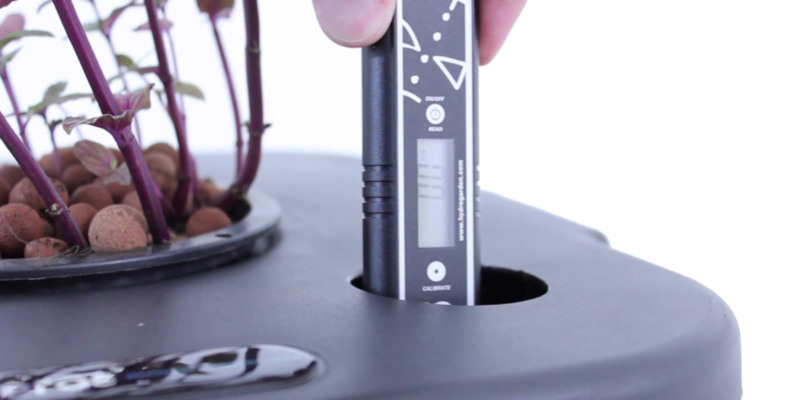I often get asked what is Ph and why is it necessary for plant growth?
Well Ph is the measurement of acidity and alkalinity of your water or reservoir that you feed to your plants. This measurement determines whether your feed solution has high levels of acid or alkaline and is a major factor of nutrient uptake and absorption. The scale of measurement is simply 0 to 14. Zero being the most acidic, 7 being neutral and 14 being most alkalinic. Most base nutrients used by plants are soluble, with a limited range of acidity. But there are now products on the market which are in fact Ph perfect, such as Advanced nutrients conissuer which needs little or no adjustment needed.
During early vegetive stage of your cycle such as seedlings or cuttings, you really want a PH value of around 5.5, but a more established plant with a value of 5.8 to 6.5. During your cycle.Depending on what growing media you choose to use ranges vary, for instance a soil substrate you would want a Ph values of around 6-7. A little GIY tip for when using rock wool and clay pebbles, is to make your solution at a slightly lower Ph level, of around 5 to5.5 and allow to soak,this is because they tend to have slightly higher levels alkalinity in the product. If your solution is high in acidity or alkalinity you likely to get nutrient lock, which is not good for your plants production, probably resulting in small and very weak plants susceptible to problems.
There are numerous ways that Ph can be tested, form your simples Ph test indicator which changes colour of your sample solution when dye is added, litmus paper which is the same principal, the only difference is the paper changes colour. For a more accurate reading a digital ph metres are available, which gives you a reading in the numeric scale as explained before. The GIY team recommend the Essentials Ph metre, a great pen for all level growers good value for money and very easy to maintain. For the more advanced growers Blue lab do a vast range, such as their Ph pen, Ph metre and Guardian and Combi metres, these products need to be well maintained.
You should always check Ph levels of your reservoir after you have added nutrients, additives and boosters. Do not take a reading directly after making your feed solution, you should allow for temperatures to stabilise and nutrients to dilute and disolve, if you do not take these factors into consideration it may lead to inaccurate readings and a lot of adjustment.
Here is the GIY 7 step guide to making your feed and testing for Ph is:
- Add base nutrients and stir.
- Additives and boosters then stir.
- Allow time to settle a good 30 mins to an hour.
- Test ph.
- Adjust with Ph down ( phosphoric acid) or Ph up (potassium hydroxide) then stir.
- Allow to settle a good 15 mins.
- Test Ph again and repeat from point 4 until you get your optimal ph value.
Phosphoric acid also known as Ph down brings your reservoirs value down because of the acidity. Potassium hydroxide also known as Ph up will bring you value up due to alkalinity. Ph down dependant on the manufacturer is available in different strengths and some do a growth and bloom formula organic as well, companies such as Canna, House & Garden and Dutch pro. The stronger variety such as Essentials ph & Growth technology ph are 81% which is extremely strong and would recommend only adding droplets at a time. Too much use of either product for readjustment of your reservoir, will cause various important food chains to be knocked out so use sparingly. Never mix Ph down and ph up directly for this will cause imbalance and could explode.
I would recommend checking the ph levels of your reservoir every 2 to 4 days, dependant on what hydroponic system you chose to use the ph can fluctuate in a short time frame, especially in recirculating or run to waste systems. A GIY tip is to never assume your tap water has the same ph value, over time it varies. For the more advanced grower checking the ph levels of your media or root zone is an important factor, to distinguish if there is any differences in root zone water and reservoir,so that adjustments can be made to the proper levels.

